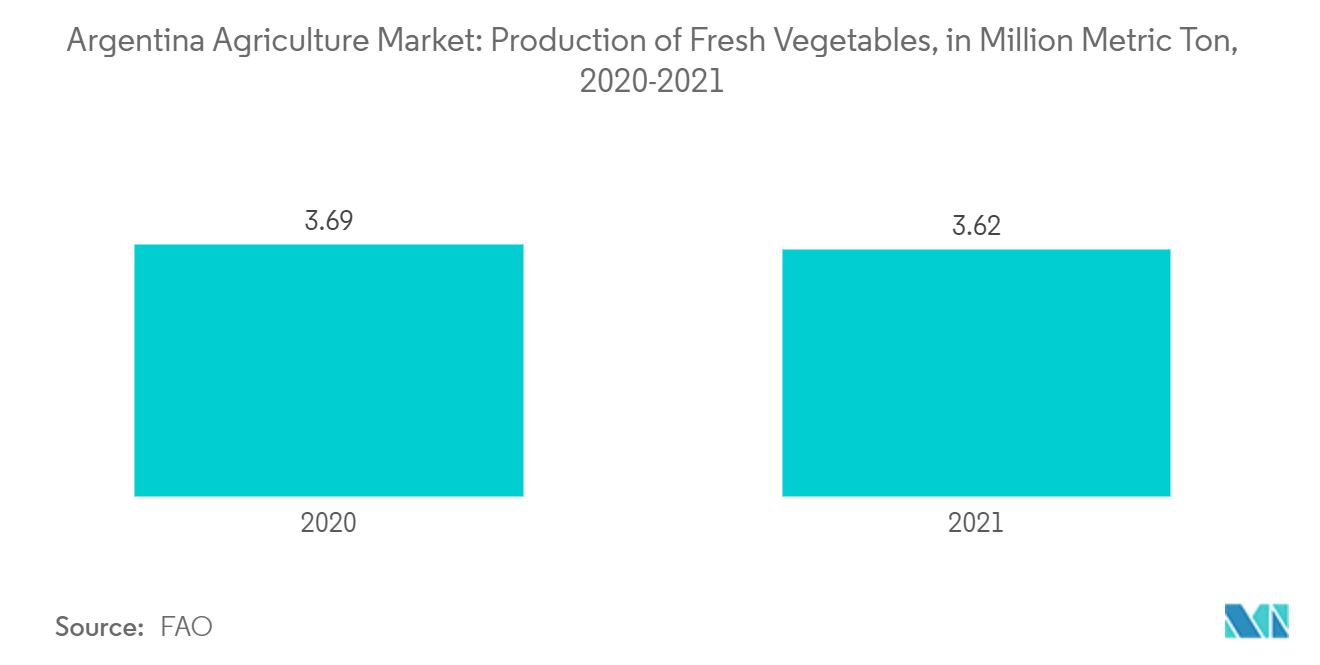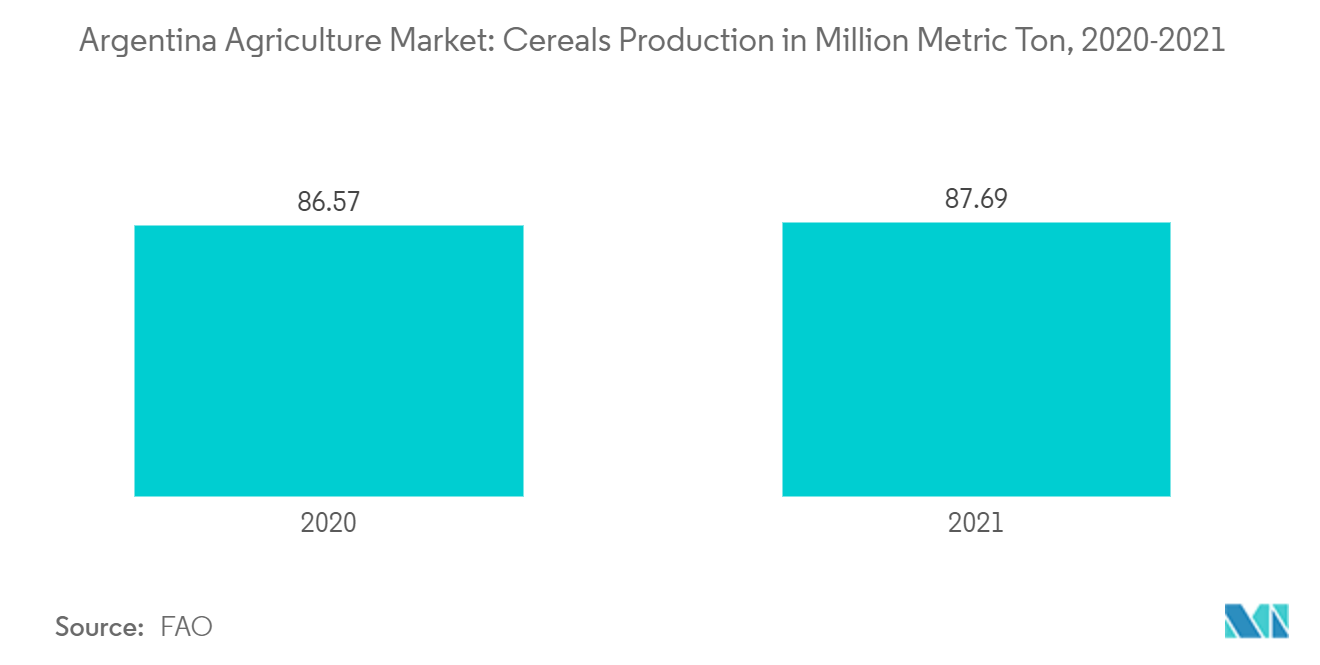Market Trends of Agriculture in Argentina
Rising Health Awareness has boosted the Demand for Fruits & Vegetables
The increasing concern of health consciousness trend is leading to more consumption of fruits and vegetables, including high import of off-season varieties in the market. There are some major fruits and vegetables such as carrots, peppers, onions, chilies, beans, turnips, tomatoes, oranges, grapes, apples, peaches, avocados, and strawberries, are characterized by high market growth potentials in Argentina during the coming years. According to FAO, the fresh vegetable segments have slightly increased with 3.62 million metric ton which is a slight decline compared to the previous year with 3.69 due to the pandemic effect in the country. After this market will going to raise at a higher pace during the forecasting period.
Rising organic food demand in order to minimize chances of chronic diseases like cancer, hypertension, and diabetes among the population is anticipated to drive the Argentina agriculture market during the forecast period. Government agencies are implementing several agricultural policies and services to promote economical and infrastructural developments in the country. For instance, the National Institute of Agricultural Technology (INTA) provides technical assistance for innovation in value chains, agricultural R&D, and extension services for small-scale producers.
The Government of Argentina announced adjustments to export taxes on many specialty crops, including apples, pears, citrus fruits, blueberries, tomatoes, broccoli, cauliflower, nuts, and alfalfa intended to improve the international competitiveness and standardize export tax rates for many products at 0%, 3%, 4.5%, and 9% to avoid varying export tax rates among similar products to encourage exports of added-value products and products whose increased production will result in higher levels of employment, and for which increasing exports won't raise food costs. The government also hopes to encourage investment in these same sectors to encourage the domestic production and demand from the consumer related to health will drive the market during the forecast period.
The rapid adoption of new technologies such as, crop rotation, precision farming, new improved seeds with genetically-modified traits, and no-tillage farming is leading to an innovative farming practices by many large service providers to increase crop productivity in the forecast period.

Cereals and Grains is Leading Agriculture Market in Argentina
The high degree of adoption of crop diversification by the producers in cereals and grains is subsequently a key driver to manage risks and soil sustainability. Furthermore, the cereals like wheat, sorghum, corn, and barley comprise a higher degree of carbon fixation in the soil, thereby a high quantity of grasses with more vegetative coverage thus leads to reduce soil and wind erosion and provides resistance to biotic and abiotic stress. According to FAO, cereals production has increased by 87.69 million metric ton in 2021 which is a slightly increased compared to the previous year and raise the market in coming years.
Argentina is the primary South American producer and exporter of wheat, accounting for about 7% of global exports. Brazil is a prominent importer, mainly from Argentina (75%), followed by the United States (10%), and 15% from Paraguay, Russia, Uruguay, and Canada. The ongoing conflict in Ukraine has caused wheat supply and food security concerns for many major wheat importers that depend on Black Sea supplies. In this case, South American producers may increase supply to African countries. Argentina already has increased exports to Africa.
Additionally, Argentina is researching on genetically engineered new wheat known as HB4 which can uses a gene taken from sunflowers. If successful, Argentina could keep its position as one of the world's top wheat exporters and might ease some agricultural concerns for the future which will drive the growth of the market in coming years. Right now, for example, China and countries in North America and Europe are at lower than usual levels of wheat production because of drought. Russia's war in Ukraine has also reduced the world's wheat supply.
The rise in silos areas for cereals and grains is also a key driver to enhancing quality of logistics services and minimizes post-harvest losses. Additionally, the silos minimizes risk of macroeconomic instability and shortage in credit among the farmers, thereby supports storage and transportation of the produce will raise the growth of the market in coming years.

